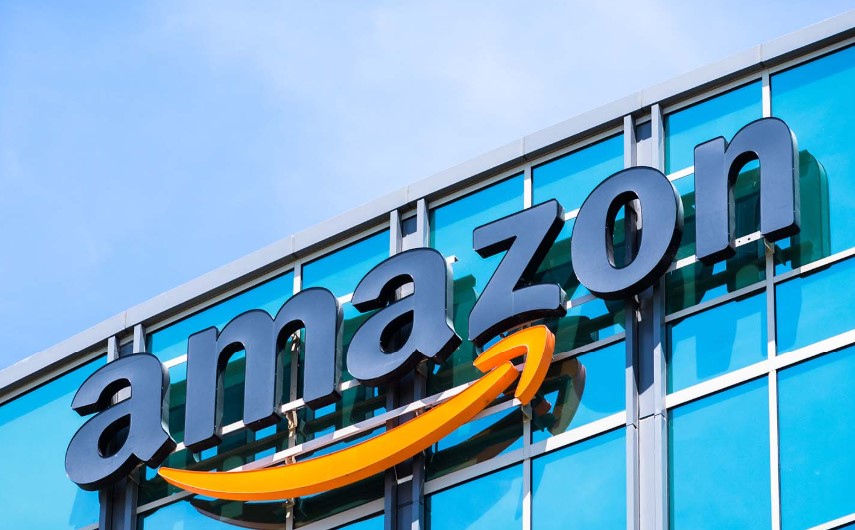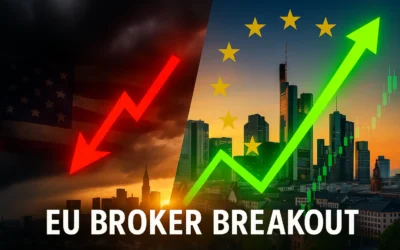Amazon (NASDAQ: AMZN) stands as one of the most influential companies globally, revolutionizing e-commerce, cloud computing, digital media, and more. Despite its size and brand power, the stock remains subject to market fluctuations and evolving competitive pressures. This article explores Amazon’s financial performance, key highlights, and future prospects, referencing the Finviz chart showing the stock trading around $208 after a recent pullback.
Financial Performance
Amazon’s revenue mix spans multiple segments, each contributing to its substantial top line:
- E-Commerce:
- Amazon’s core retail business remains the primary driver of revenue.
- The platform continues to attract third-party sellers, expanding product variety and boosting marketplace fees.
- Amazon Web Services (AWS):
- A leader in the cloud computing space, AWS boasts strong profit margins and high growth potential.
- As businesses worldwide accelerate digital transformation, AWS’s recurring revenue model provides a stable foundation.
- Subscription Services:
- Amazon Prime, which offers free shipping, streaming services, and other perks, contributes to customer loyalty and recurring revenue.
- Additional subscriptions, like Kindle Unlimited or Amazon Music, diversify this income stream.
- Advertising and Other:
- Amazon’s advertising platform has grown significantly, leveraging customer data to deliver targeted ads.
- Other segments, including hardware (Echo devices, Fire TV) and physical stores (Whole Foods), add more layers to Amazon’s revenue engine.
Despite the company’s massive revenue base, margins can be compressed by ongoing investments in logistics, data centers, and new ventures.
Key Highlights
- Logistics Infrastructure:
Amazon’s extensive fulfillment network supports its quick shipping times, setting a high bar for competitors. - International Expansion:
The company continues to invest in emerging markets, particularly in India, to capture new consumer segments. - Ecosystem Synergy:
Prime members often spend more, illustrating how Amazon’s ecosystem of services locks in consumer loyalty.
Profitability and Valuation

- Operating Margins:
Amazon’s operating margins vary across segments. AWS maintains higher margins than e-commerce, balancing the lower profitability of retail. - Price-to-Earnings (P/E):
Historically elevated due to the company’s growth profile, Amazon’s P/E ratio can contract when markets shift focus from growth to profitability. - Cash Flow Focus:
Investors often watch free cash flow as a better gauge of Amazon’s financial health than traditional earnings metrics, given its heavy reinvestment strategy.
Debt and Leverage
- Moderate Leverage:
Amazon carries some debt, primarily to fund acquisitions (like Whole Foods) and to expand infrastructure. - Strong Cash Position:
Substantial operating cash flow helps service debt and fund new projects, mitigating leverage risk.
Growth Prospects
- Cloud Dominance:
- AWS is a key profit engine, with continued expansion in AI, machine learning, and serverless computing.
- Partnerships with enterprise clients could accelerate AWS’s global market share gains.
- Digital Advertising:
- As third-party sellers and brands seek greater visibility, Amazon’s ad platform has potential for significant growth.
- The platform’s retail data provides unique targeting capabilities, challenging established ad giants.
- Healthcare Initiatives:
- Amazon’s push into healthcare—through pharmacy services, telehealth, and potential acquisitions—represents a large, untapped market.
- Logistics Services:
- Amazon’s advanced logistics capabilities may evolve into a standalone service, competing with established couriers.
Technical Analysis
Recent Price Action
According to the Finviz chart, AMZN reached highs near $230 before declining to around $208. The stock appears to be breaking below its 50-day moving average, suggesting near-term weakness.
- Support Levels:
Around $200–$205, where buyers have previously stepped in. - Resistance Levels:
Near $220–$230, aligning with recent peaks and a potential descending trendline.
A decisive move above $220 on high volume might signal a return to bullish momentum, while a drop below $200 could indicate further downside or consolidation.
Potential Catalysts
- Earnings Surprises:
- Better-than-expected AWS growth or improved retail margins could renew investor confidence.
- New Product Launches:
- Expanding the Echo ecosystem, new subscription tiers, or hardware innovations can boost revenue streams.
- Regulatory Relief or Clarity:
- Ongoing antitrust scrutiny can weigh on the stock; any favorable resolution or clear guidelines may alleviate investor concerns.
Leadership and Strategic Direction
- CEO Andy Jassy:
After taking the reins from founder Jeff Bezos, Jassy’s background at AWS underscores the company’s pivot toward high-margin, tech-driven growth. - Innovation Culture:
Amazon’s “Day 1” philosophy emphasizes continuous reinvention, encouraging bold moves in new verticals. - Strategic Acquisitions:
The company often acquires or partners with innovative startups to integrate cutting-edge technologies.
Impact of Macroeconomic Factors
- Consumer Spending:
Economic slowdowns can reduce discretionary purchases, affecting retail sales. - Global Supply Chain:
Pandemic-driven disruptions or geopolitical tensions could impact logistics costs and delivery times. - Interest Rates and Inflation:
Rising rates might limit consumer spending, while inflation can erode profit margins if not managed through pricing strategies.
Total Addressable Market (TAM)
Amazon’s TAM spans global e-commerce, cloud services, digital advertising, media streaming, and more. Each segment has vast growth potential, from the billions of global internet users who could become Prime subscribers to businesses needing cloud infrastructure.
Market Sentiment and Engagement
- Investor Enthusiasm:
Historically high due to Amazon’s track record of reinvention and strong top-line growth. - Analyst Coverage:
Many analysts remain bullish, citing AWS’s profitability and the company’s expansive opportunities. - Retail Investors:
Often drawn by Amazon’s household name and perception as a “safe” long-term tech bet, though stock price volatility can still occur.
Conclusion
Amazon remains a formidable force in e-commerce and cloud computing, with ongoing expansion into advertising, healthcare, and logistics. While near-term stock performance may fluctuate due to macroeconomic headwinds and market sentiment shifts, the company’s robust cash flow and culture of innovation provide a strong foundation for future growth.
Target Price Objectives
- Short to Mid-Term:
If Amazon demonstrates resilient retail sales and accelerating AWS growth, a rebound toward $220–$230 is plausible. - Long-Term:
Continued expansion into high-margin verticals could propel the stock beyond $250, assuming stable market conditions and no major regulatory hurdles.
Stop-Loss Recommendation
Given the recent pullback, placing a stop-loss near $200 could help protect against a deeper downturn. This level aligns with prior support and a round-number psychological threshold, offering a strategic cushion should the broader market weaken.
Discover More
For more insights into analyzing value and growth stocks poised for sustainable growth, consider this expert guide. It provides valuable strategies for identifying high-potential value and growth stocks.
We also have other highly attractive stocks in our portfolios. To explore these opportunities, visit our investment portfolios.
This analysis serves as information only and should not be interpreted as investment advice. Conduct your own research or consult with a financial advisor before making investment decisions.
Disclaimer: This article is for informational purposes only and should not be considered financial advice. Always conduct your own research or consult a financial professional before making investment decisions.









0 Comments